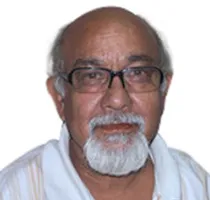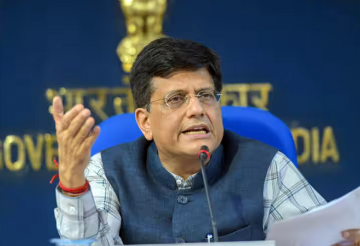
The recent decision of the Ministry of Finance to ban the entry of even Government of India accredited media persons within the premises of the ministry without prior appointment or approval has again stirred a debate raising concerns whether the country’s communication system was slowly but surely heading from free flow of information to restricted, regulated and controlled regime.
Though it is one of the first steps in the Modi 2.0 government but it is neither the first nor the last if we were to take a close look at the over 25 years of relationship between Prime Minister Narendra Modi in particular and the RSS-BJP in general.
While professional media organisations like the Editors Guild of India, Press Associations, Press Club of India and Indian Women Press Corps and Foreign Correspondent Club have lodged protests at the decision and have asked the Government to take back the latest curb, but it is very unlikely to happen taking a cue from the past.
While professional media organisations like the Editors Guild of India, Press Associations, Press Club of India and Indian Women Press Corps and Foreign Correspondent Club have lodged protests at the decision and have asked the Government to take back the latest curb, but it is very unlikely to happen taking a cue from the past.
The government accredits journalists with a minimum of five years of experience through the Press Information Bureau (PIB) under the Ministry of Information & Broadcasting. The accreditation, given after a detailed security check by the Ministry of Home Affairs, is for the “access to information in the government and also to news material” One of the primary duties of a journalist is to engage with all levels and layers of government both on and off record so that he can fulfill a constitutional responsibility of informing people on the basis of the right to know.
Providing relatively unrestricted access to media persons for their newsgathering functions is not a favour or a gift by the government and it cannot be governed by whims and fancies of the government of the day.
In Modi 1.0 government or earlier during his chief ministerial days in Gujarat, there was a visible pattern of preventing, restricting and denying accessibility to information to media. Immediately after assuming power in May 2014 at the Centre and in BJP-ruled states, it was clearly on display.
Similar developments were seen in the BJP also after the arrival of Modi on the national scene. When his comrade-in-arms Amit Shah was appointed the General Secretary of the party by the then president Rajnath Singh, media’s access to key office bearers of the party was curtailed and restricted. It was a total contrast to unrestricted access that BJP beat media persons used to enjoy earlier when the party was trying to win over the media for an image change.
Providing relatively unrestricted access to media persons for their newsgathering functions is not a favour or a gift by the government and it cannot be governed by whims and fancies of the government of the day.
In July 1915, the Union Home Ministry issued guidelines nominating the additional director general (media) as the “single point dissemination” of all publicity material to the media, including clarifications sought by it. The guidelines also stressed that release of information to media would be done only with the approval of the Union Home Secretary.
At the same time, these directions also restrict movement of journalists in the ministry. “The information flow to media persons will be arranged in Media room No. 9. Media persons will be asked by ADG (media) that they do not have meeting with officers other than in the media room”, it said.
Pointing to a “security scenario”, the Ministry of Defence had also issued a circular warning officials and service personnel in South Block against talking to media directly while asking them to undertake communication through official channels. Similar kind of restrictions have either already been introduced or are in the process of being pushed through in other ministries.
Making the task of the media difficult and denying accessibility to official channels may have surprised accredited and non-accredited members of the press corps in New Delhi but not friends from Gandhinagar and Ahmedabad, where the life of a journalist became challenging and difficult between 2001 and 2014 when the Prime Minister sat on the chief ministerial chair.
Controlling and restricting the flow of information was the highlight of Modi’s style of governance in Gandhinagar. Journalists’ access to the secretariat was gradually restricted. Long established and followed practice of Chief Minister briefing media persons, who covered secretariat regularly, after the cabinet meeting on Wednesdays in his chamber was slowly discontinued.
Free movement and interactions provide media persons understanding of the intricacies of the decision- making process as prime minister, chief ministers, ministers and officials informally explain things to them.
Making the task of the media difficult and denying accessibility to official channels may have surprised accredited and non-accredited members of the press corps in New Delhi but not friends from Gandhinagar and Ahmedabad, where the life of a journalist became challenging and difficult between 2001 and 2014 when the Prime Minister sat on the chief ministerial chair.
In one of his first acts upon assuming charge, the Prime Minister discontinued with the long-followed tradition of taking non-official media persons with him on his foreign visits and thus ensured the flow of information as official media like the Doordarshan, All India Radio and news agencies are easy to control and guide.
It should be accepted here that over the years various governments which include both the BJP and Congress have nibbled at the access of accredited journalists. I can remember when, armed with a Press Information Bureau card, I could go to the Ministry of External Affairs or the PMO in the South Bock to meet officials there but it was changed and then I could not even enter either of the two.While every ruling party in democracies is apprehensive, a bit cautious, a trifle worried and sometimes afraid of the media, when in Opposition, all parties sing paeans of a free media and vouch for freedom of expression but strangely they change colours like a chameleon when a role reversal takes place.
The situation is radically different today as the opposition is divided and weak. There is no threat to the government from any quarters. Modi has a direct rapport with the people. Riding on the popular wave after an unbelievable victory in general elections and having succeeded in creating an environment of suspicion and cynicism about media, the Modi government is least concerned being convinced that possibility of a wide-spread popular agitation is ruled out on the issue.
The views expressed above belong to the author(s). ORF research and analyses now available on Telegram! Click here to access our curated content — blogs, longforms and interviews.




 PREV
PREV


